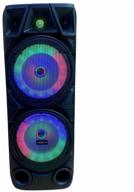
Review on SainSmart 101 70 103 16 Channel Relay Module by Jerry Moody

Great board for the price
No problem with every board I've received over 5 have been controlling various aspects of my smart home for over 2 years. For those who need help, this is the easiest way to connect them. to the Raspberry PI: The relays are activated when the relay contact is pulled to LOW (0) volts. The pins are made for Arduino but will work with PI if you connect a 3V LED between the relay board and the PIGND pin on the relay board ----------> the GND pin on the pin the Raspberry PIRelay board --- -> LED anode (long wire) / LED cathode (short wire) -------> Raspberry PI GPIO, you need to do this 16 times. This has additional benefits: An indication of whether a relay should be on for installation on the side/top of the project box (just leave unused ones in) Relays do not trip on reset PI Relays do not trip when PI is off, parts are cheap and comparable to using resistors. How it works: When an LED is used in this way, it is essentially a device that steps down the voltage by 3V and converts excess energy into light. PI requires a maximum of 3.3V for its pins. This method reduces 5V to 2V for PI. (Can be checked with a multimeter). When the PI GPIO is HIGH (ON), 3.3V appears on the PI and 5V on the relay board, the relay remains disabled. relay board. When the PI forces the pin to go low, the LED starts conducting by turning on. The current limiting resistors on the relay board keep the LED from conducting too much current (and burning out) while still providing enough current to activate the optocoupler, which turns the relay on.
- Automotive
- So so
New products
Comments (0)
Top products in 🔋 Switches & Relays

Gaming headset ASUS TUF Gaming H3 (90YH02AR-B1UA00) black-red

46 Review

Portable bluetooth speaker BT Speaker ZQS-8210 high power universal

35 Review

Xiaomi Mi Robot Vacuum-Mop 2 EU, white

82 Review

5-Pack 12V/20A Red LED Illuminated 3Pin HOTSYSTEM Rocker Toggle Switch SPST ON/Off Carbon Fiber Cover For Car Truck Boat Motorcycle

45 Review





